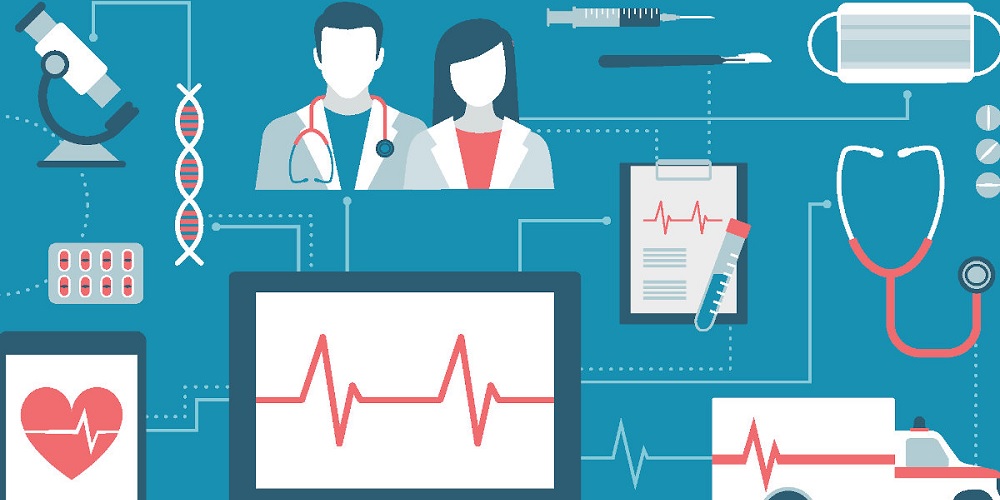5 Ways Technology Improves CME Effectiveness

It wasn't that long ago that continuing medical education (CME) was mainly lectures and reading textbooks. That form of learning proved somewhat demanding, especially for learners who might have benefited from other forms of interactive content.
Technology has come to the forefront, and while the traditional forms of learning still exist, many clinicians are gravitating toward the different methods of learning that technology has to offer. In this blog post, we highlight five ways technology improves CME effectiveness.
1. Move Away from Old Technology
Old methods of technology are being left behind in favor of e-learning. As a CME provider, you can embrace how technology is improving CME effectiveness by using strategies that will take away any learner frustrations.
For example, certain older methods often fail to engage learners, creating the perception that continuing education is boring and more about compliance with CME credit than an opportunity to learn. Lecture content is quickly forgotten and does not utilize individual learning styles to tap into how people learn and retain information most effectively.
Technology today can create multiple modes of learning along with individualized pathways to make CME more impactful.
2. Embrace E-learning
Embracing the creation of e-learning content enables CME providers to use various strategies to engage learners. For example, you can offer simulations to test knowledge and teach material that adapts to different learners’ needs. You can offer live streaming or on-demand content too.
E-learning makes it easy for learners to go at their own pace and access information at times that are convenient to them. Professionals may not be able to break away from their job to attend on-site CME, but if they can work online, they can carve out time during their off-hours. Self-paced study has also been shown to help learners develop an individual learning style, which helps increase knowledge retention. Since it doesn’t involve using physical textbooks, you can always ensure that it’s up to date with evidence-based best practices. When new data surfaces, you can easily adapt materials to include it.
3. Use Videos for Improved Learning
Effective CME utilizes multiple tools to help foster learning. Most learners absorb information best when multiple modalities are employed. An effective tool is video, especially for visual learners.
Videos can help:
- Enrich text learning and extend lessons
- Provide concepts in a visual manner
- Reinforce key points
- Keep learners engaged
You can also provide a text version for those who learn better by reading or enhance your videos by providing closed or open captioning. Captioning in multiple languages can help make learning more accessible for those who may not be native speakers.
4. Use Audio to Increase Learning
CME providers can incorporate audio clips into their curricula and create podcasts of their content. Audio content can also help bring CME training to life, such as listening to patient vital signs or assessing patient conditions.
Auditory learners understand and retain information more easily through listening.
5. Leverage an LMS for Your CME Effectiveness
Since CME is rapidly evolving, changing how you provide content to your learners is crucial if you want to remain effective. Video and audio are at the forefront of new strategies for CME and are effective at reaching a wide range of learners.
However, creating effective CME programs relies on having a robust technology platform that enables you to incorporate multimedia presentations and adapt to different learning styles. EthosCE is a compliant learning management system (LMS) designed to automate and modernize the delivery of continuing education in the health professions.
The Benefits of EthosCE
With the EthosCE LMS, you can create engaging and effective CME programs, including live streaming, video, and audio. Zoom and GoToWebinar are now available directly in EthosCE and can be used for meetings, conferences, and other activities.
Activities can be converted into enduring materials, so you get the initial value of live streaming with the benefit of on-demand learning in the future. This helps broaden the reach of your content.
Engage Learners
You can engage learners during your CME programs and stay in touch with them before, during, and after the program. EthosCE supports online registration and communication, automated reminders, and follow-up surveys.
Create Social Experiences
For many people, learning is better as a social experience. EthosCE enables learners to ask questions, chat, and form relationships with peers and trainers to provide a richer experience.
Monitor Progress and Measure Outcomes
CME providers can track progress with a built-in reporting engine that measures outcomes. With EthosCE, you can easily customize reporting to meet your unique requirements. You get a complete analysis of course data, track learner feedback, and benchmark data against historical results.
At Cadmium EthosCE, we understand the challenges of creating effective CME programming. We also know how critical it is to find effective ways to make an impact on learners in a busy, modern world. Contact us today to learn more.
